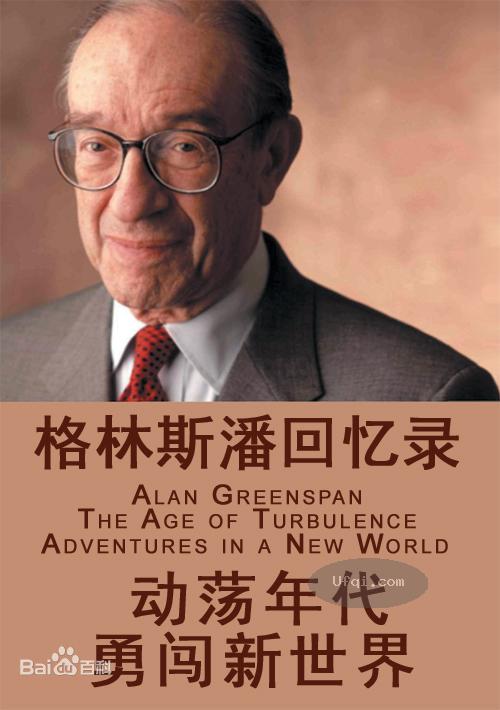


2023-05-03 , 8652 , 104 , 244
美联储主席格林斯潘回忆录——动荡年代:勇闯新世界-16
THREE
ECONOMICS MEETS POLITICS
Economic forecasting took Washington by storm in the 1960s. It started when Walter Heller, a witty, erudite professor from Minnesota who was chairman of the Council of Economic Advisors, told President Kennedy that a tax cut would stimulate economic growth. Kennedy resisted the idea—after all, he had come into office calling for self-
sacrifice by the American people. Also, under the circumstances, a tax cut
would mean a major change in fiscal policy, because the government was already in deficit. The economy back then was governed by the model of household finance—you were supposed to balance your budget and make ends meet. One year, President Eisenhower actually apologized to the American people for running a $3 billion deficit.
But after the Cuban missile crisis, with the 1964 election already on the horizon, the economy was growing too sluggishly, and Kennedy finally let himself be persuaded. The $10 billion tax cut he proposed to Congress in January 1963 was dramatic—it is to this day the biggest tax cut since World War II, adjusting for the size of the economy, and almost as big as all three of George W. Bush's tax cuts combined.
Lyndon Johnson signed the tax cut into law soon after Kennedy's death.
To everybody's delight, it had the effect that the Council of Economic Advisors had promised: by 1965 the economy was thriving. Its annual growth rate was more than 6 percent, right in line with Walter Heller's econometric forecast.
The economists were jubilant. They thought they'd at last solved the riddle of forecasting, and they weren't shy about congratulating themselves:
"A new era for economic policy is at hand,"
the CEA's Annual Report in January 1965 declared.
"Tools of economic policy are becoming more refined, more effective, and increasingly freed from inhibitions imposed by traditions, misunderstanding, and doctrinaire polemics."
It said that economic policymakers should no longer just respond passively to events but should "foresee and shape future developments."
The stock market boomed, and at the end of the year Time magazine put John Maynard
Keynes on the cover (even though he'd been dead since 1946), declaring,
"We are all Keynesians now."*
I could scarcely believe it. I'd never been confident in making macroeconomic
forecasts, and while Townsend-Greenspan did provide them to clients, they weren't central to our business. I had to admire what Heller had pulled off. But I also remember sitting in my office at 80 Pine Street with its view of the Brooklyn Bridge and thinking, Boy, I'm glad I don't have Walter Heller's job. I knew that macroeconomic forecasts are far more art than science.
Those rosy economic results deteriorated as the Johnson administration began pumping vast sums of money into the Vietnam War and Great Society programs. Beyond the necessities of day-to-day operations at Townsend-Greenspan, I took a deep interest in governmental fiscal policy and often wrote newspaper op-eds and articles for economics journals that were critical of the administration. The economics of the Vietnam War in particular fascinated me because of my earlier work on Korean War spending.
When my old colleague Sandy Parker, who was still chief economist at
*Richard Nixon picked up this line and used it as president in 1971 in defense of his administration's
fiscal deficits and economic interventionism.
55



Fortune magazine, asked in early 1966 for Townsend-Greenspan to help examine the cost of the war, I readily agreed.
Something in President Johnson's accounting didn't add up. The administration's
estimates of war costs seemed low, based on what was becoming known about the growth of the U.S. deployment—General William Westmoreland was reportedly asking behind closed doors for an increase to four hundred thousand troops. I pulled apart the president's budget proposal to Congress for the fiscal year starting July 1, 1966, and by applying what I knew about the patterns and practices of Pentagon spending, I determined that the budget lowballed the likely cost of the war for that year by at least 50 percent—$11 billion or more. (The budget also assumed, in a revealing footnote looking toward 1967, that combat operations would end on June 30 of that year, so no costly replacements of planes or other equipment lost would be needed after that.)
Fortune broke the story in an April 1966 piece entitled
"The Vietnam War: A Cost Accounting."
The article concluded bluntly: "The budget barely begins to suggest the level of Vietnam War spending that lies ahead." Coming from a respected business publication, it added fire to the growing debate about whether LB J and his administration were hiding the cost of the war.*
Apart from being suspicious about the war's economics, however, I was pretty much out of step with the times. When people think of the sixties, they think of civil rights marches, antiwar demonstrations, and sex, drugs, and rock and roll—a culture dramatically and flamboyantly in upheaval.
But I was on the other side of the generation gap. I'd turned forty in 1966,
which meant I'd become an adult in the 1950s, when you wore a jacket and a tie and smoked a pipe (with tobacco in it). I was still listening to Mozart and Brahms, and to Benny Goodman and Glenn Miller. Popular music became almost wholly alien to me with the arrival of Elvis—to my ears, it was on the edge of noise. I thought the Beatles were reasonably good musicians;
they could sing well and had engaging personalities—and compared with some of what soon followed, their music was almost classical. The culture
*President Johnson played loose with the numbers from the start. The historian and former LBJ consultant Eric Goldman, for example, described in a 1969 memoir how Johnson misled reporters about his first budget to "heighten the impression of devotion to economy and skill in achieving it."
56
of the sixties was alien to me because I thought it anti-intellectual. I had a deep conservatism and a belief in civility. So I didn't relate to flower power.
I had the freedom not to participate, and I didn't.
My involvement in public life started in 1967 with Nixon's campaign for president. I'd been writing an economics textbook on the side with a Columbia University finance professor named Martin Anderson. Marty had made a reputation for himself in conservative circles with a book called The Federal Bulldozer, a critique of urban renewal that had caught Nixon's eye.
Our plan had been to collaborate on a textbook describing a laissez-faire capitalist system; with some sense of irony we'd decided that Marty the academic, would write the chapters about business, and I, the business consultant,
would write the chapters about theory. But we hadn't gotten very far when Nixon asked Marty to join his presidential campaign as his chief domestic policy adviser.
As soon as he joined the campaign, Marty asked if I could help their little crew develop policy and write speeches. The senior staff at that point consisted of just four people besides Marty: Pat Buchanan, who was chief of staff, William Safire, Ray Price, and Leonard Garment. Len was the only one I knew, although I had seen him only rarely since we'd played together in the Henry Jerome orchestra more than twenty years earlier. Now he was a partner at Nixon's law firm in New York, Nixon Mudge Rose Guthrie Alexander & Mitchell. The six of us went out for lunch and talked about what I could do for the campaign. They liked some of my ideas, and finally Buchanan suggested that before we went further, I should come talk to



UfqiLong
the candidate.
A couple of days later I went to meet Nixon at his office. It intrigued me that he was back in the political game. Like everybody, I remembered his farewell gibe at reporters after losing the California gubernatorial race in 1962, in which he thought the press had been against him: "You won't have Nixon to kick around anymore, because, gentlemen, this is my last press conference." Nixon's office at Nixon Mudge Rose was chock-full of memorabilia and autographed photos—I had the sense that here was a once-important figure who had been pushed off into a little room with a lot of memories. But Nixon was very elegantly dressed, and he didn't just look the part of the successful senior New York lawyer, he acted it too.
57
Without wasting time on chitchat, he drew me out with thoughtful questions
about economics and policy. When he set forth his ideas, he did so in perfectly turned sentences and paragraphs. I was very impressed. Later in the campaign, I'd sometimes have to brief Nixon on an issue before he met with the media, and he'd go into that same intense, factually oriented lawyer mode. He could listen for five minutes on a subject he couldn't possibly know much about—a breaking news event, for instance—then get out there and sound as knowledgeable as a professor. I would say that he and Bill Clinton were by far the smartest presidents I've worked with.
The Nixon for President committee had offices at Park Avenue and Fifty-seventh Street in the old American Bible Society Building. I initially worked a couple of afternoons a week, increasing to four, five, or even more as the campaign geared up. They appointed me "economic and domestic policy adviser," but I was always strictly a volunteer. I worked very closely with Marty, who'd taken a leave from Columbia and who was on the campaign plane full-time. Part of my job was to coordinate responses on any issue that came up: we'd scramble to assemble the necessary research and fax it to Nixon and the campaign team overnight. He wanted to come across as informed, and I helped organize task forces on economic issues. The main objective of these task forces was to bring people into his camp.
There were almost twice as many registered Democrats as Republicans in America,*
and Nixon needed to include everyone he could. Each task force would get together, the members would tell Nixon what they thought, and everybody would smile and shake hands and take pictures. But the work I enjoyed most, and my most original contribution, was integrating state and local polls. During the election campaign of 2004, politicians could go on the Internet and each day get an up-to-date electoral count based on polls within the fifty states. That technology wasn't there in 1968, but I built something as close to it as you could get. I took all the state polls we could find, related them to past voting patterns and trends, and extrapolated for states that did not have polls—all to project the popular vote and the electoral vote.
*The distribution of voters, according to the Center for the Study of the American Electorate, was seventeen million registered Democrats versus nine million registered Republicans.
58
(未完待续, To be contd)



🔗 连载目录
🤖 智能推荐














